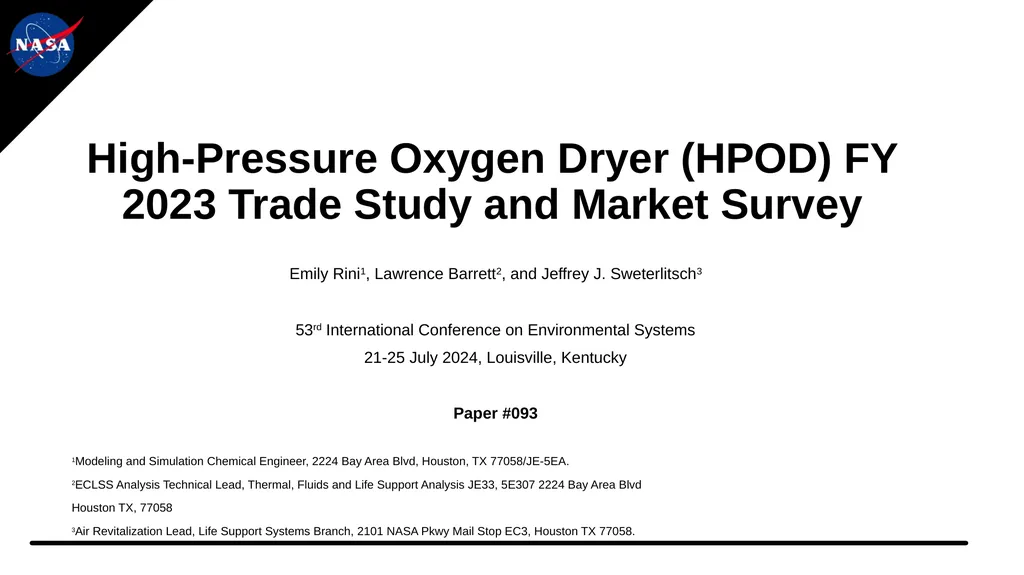
High-Pressure Oxygen Dryer (HPOD) FY 2023 Trade
Author: alida-meadow | Published: 2025-08-13
Description: High-Pressure Oxygen Dryer (HPOD) FY 2023 Trade Study and Market Survey Emily Rini1, Lawrence Barrett2, and Jeffrey J. Sweterlitsch3 53rd International Conference on Environmental Systems 21-25 July 2024, Louisville, Kentucky Paper 093
Download Presentation
Download the PPT/PDF: Download
Transcript:
Loading transcript…